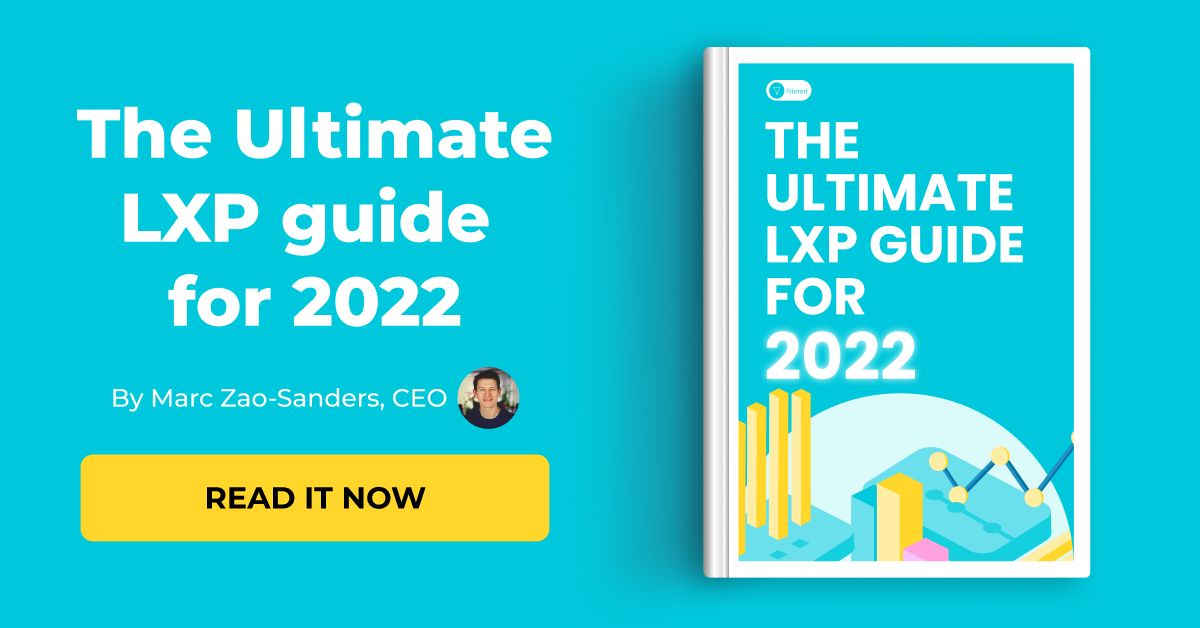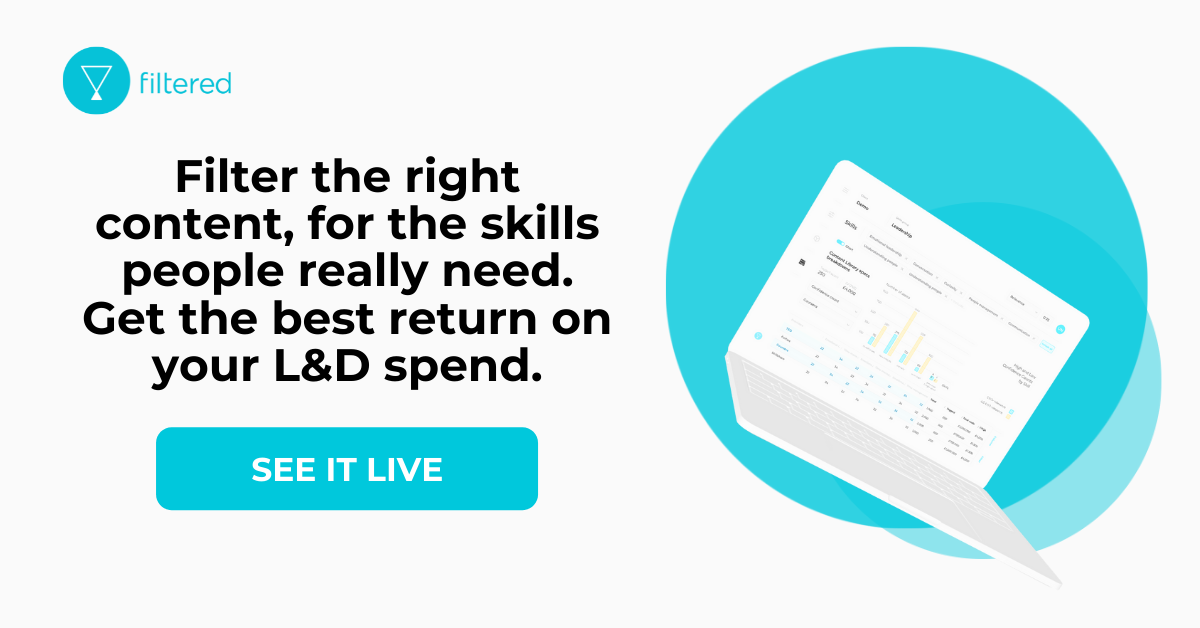Great products are a feat of recognition. They don’t really begin when you launch a great new idea (although that is part of the process) but when you recognise the obvious thing that has been eluding you about an existing product. What do your customers really use it for?
(The famous example of finding out a product’s real purpose is McDonalds realising what milkshakes were really used for some years ago...)
Microsoft Viva is one such feat of recognition. Microsoft has recognised that its big, complicated suite of collaboration products (SharePoint, Yammer, Teams) are really being used to address one simple challenge: creating a better employee experience.
They have had some help from Josh Bersin, who says in this podcast that he has been working with Microsoft for the past three years on his concept of the ‘employee experience platform’.
I think the experience of the pandemic and the ‘new normal’ of remote working, with the skyrocketing adoption of MS Teams, was also decisive in bringing about this recognition.
For example, it's easy to notice that you need to adapt your onboarding process if you remove the office from it (and it’s not surprising that Microsoft dramatise an onboarding process at the end of its magisterial thirty minute product video). In so many ways, the forced march into remote working has brought the problem of confusing and lonely employee experiences into radical focus. When all your people have is a screen, what is on the screen and how well it works start to matter even more.
The strength and simplicity of the concept of employee experience is powerful. It has enabled Microsoft to bundle a wide array of features and tools into just four areas: Connections, Learning, Topics and Insights. Between them they cover navigation and community, personal development, knowledge management and well-being.
The product launch material emphasises Viva’s intelligence in all of these areas. Its AI can personalize communities and newsfeeds, recommend learning and construct knowledge bases on the fly and in the flow of work. Integrations are also emphasised: Viva doesn't just have close links to Microsoft acquisitions like LinkedIn Learning and Glint, it's also announced as having high-profile partnerships with Cornerstone, SuccessFactors, Skillsoft, Coursera, Pluralsight and edX.
Rightly, these AI capabilities and integrations will excite senior people leaders at big companies. They will shudder in recognition when Microsoft’s Jared Spareto points out that people spend the equivalent of seven weeks every year searching for or recreating information. They'll be giddy when they realise that Viva promises to seamlessly integrate all those content libraries and LMS products that have often seemed so stubbornly siloed.
Doubtless, these are big league problems and it’s awesome that Microsoft has them in its sights. But I think we all learned to be a little more cautious with such announcements after the “learning app for Microsoft Teams” (now Viva Learning), which was announced in June last year, got delayed past the promised Q4 beta phase, and I've yet to hear of anyone testing its advanced capabilities.
Make no mistake: I think Viva is a triumph of product thinking and - just like I said about the previous announcement - Viva is set to change the future of learning. But - and actually to emphasise the achievement rather than denigrate it - let's look at each of the parts with a more critical eye.
Viva Connections
For a while we’ve wondered about the future of Yammer: a tool which is still incredibly widely used as a social network in big companies, yet with huge design limitations, like its lack of chat dialogues and bots. The rumours were that Yammer would be integrated with SharePoint to handle “larger communities of workers with long-tail information to share”. In lay terms, to act as a forum rather than a messaging tool.
And lo: Viva Connections brings SharePoint and Yammer together to create a social, personalised intranet, embedded in Microsoft Teams.
This is a smart piece of positioning and product development. SharePoint and Yammer are already used alongside Microsoft Teams to create more structured content and host longer term knowledge bases and forums. And a common complaint about Microsoft Teams is that it quickly becomes a jungle that’s hard to navigate. Bringing them together in Microsoft Viva with the name “Connections” makes it clear that this revitalised combination of SharePoint and Yammer will provide a way to map key services and conversations inside your organisation.
In this respect, I suspect that Microsoft saw the rise of highly-structured hybrid knowledge and collaboration tools like Notion and realised that with the rise of remote-working, the humble intranet, now smartened-up with social and recommendations, is making a come back.
Viva Learning
The original “learning app for Microsoft Teams” was unnamed because it was plagued by a naming issue. Microsoft already had Microsoft Learn - its own product training library. With that name taken, Microsoft faced a serious positioning problem which the Viva product brand has neatly solved. This newly Viva learning app notably promises a lot of LMS and content integrations, including Cornerstone/Saba, SuccessFactors, SkillSoft, Coursera, Pluralsight and edX.
We also know more about what Viva Learning does and those heavyweight LMS integrations are a clue. In the podcast, Bersin describes it as a ‘learning experience platform and a [...] lite learning management system’. To elaborate on that: Viva Learning will encompass LXP functionality (aggregation, curation, recommendation and search) alongside limited LMS functionality (managers assigning training to groups and individuals), all within Microsoft Teams. As we predicted, Viva Learning is not coming for the complex workflows of the enterprise LMS. The plan is to integrate instead.

Assuming everything works as planned, it'll be a key reference point for the LXP market. But how much flexibility will Viva Learning allow an organisation to customise the skills framework and content curation that drives its recommendations? If the definitions behind its AI aren’t configurable, then the hard problem of getting the right learning content in the right format to the right person at the right time won’t be solved, no matter how good the AI.
Viva Topics
Viva Topics promises to do something exciting which really only Microsoft can claim to do properly: bring intelligence to knowledge management. Doubtless Microsoft have been watching cool next-generation knowledge products like Guru and Gong, which, once adopted, hoover up data, organise it and turn it into insights.
But Microsoft, which is plugged into all productivity tools all the time via the Graph API, has the unique capability to take dormant knowledge, the kind no one would bother to reformat for a new tool, and make it useful. In a big organisation, having your knowledge management system closely integrated with SharePoint, Yammer, OneDrive like this isn’t just desirable - it’s the only feasible option.
So I completely agree with Francesco Mantovani at P&G when he writes on LinkedIn:
“Years ago I got inspired by Bill Gates with his idea of the Digital Nervous System of an organization, in which people working on a topic (writing a doc or making a presentation) were able to access in real time documents available, within the same organization, on that same topic, as well as subject matter experts and experiments already performed. I thought it was the Matrix of organization design, freeing up organizations to really achieve innovation. With the announcement of MS Viva and - specifically - of Viva Topics, it seems that future is coming to us now with the benefit of data insights, AI and content intelligence. #Knowledge Management could change forever, people could be focused much more on innovation, and experiments. Rework could be relevantly diminished. How will this impact the way we design organizations? How will this change the leadership we require within those structures?”
My big question for Viva Topics is similar to the one with Microsoft Viva Learning. According to Jared Spataro, Viva Topics will use AI to categorise information according to labels like “projects, products, processes and customers” and surface them in the flow of work them as topic cards, which, when clicked, open up into full topic pages, also built using AI. This automatic categorisation and knowledge object generation could go a long way to solving search.
But how much of a role will there be for humans in this loop? Effective knowledge management requires human organisers and curators to sift through the AI output and improve it by validating categories and adding rules. If Viva Topics makes the framework for its suggestions transparent and editable by humans in this way - then it truly raises all the fascinating and important questions it promises to raise.
Viva Insights
Viva Insights is another brilliant product and positioning response to a problem that the pandemic has thrown into sharp focus. Modern work is making people sick because it’s difficult to disconnect when the tools you use to do your job are right there in your living room, and have actually been built according to persuasive design principles that make them addictive. It’s admirable that Satya Nadella makes wellbeing the central part of his introduction to Viva in the product video.
As Jesper Balslev recently pointed out to me, many of our most important technologies are in fact “negative technologies” - they’re designed to mitigate the impact some other technology has on human wellbeing. The achievement of cities isn’t packing humans together in buildings, it’s the sewerage and health systems which make that safe. The wonder of cars is that we made such insanely dangerous objects relatively safe to use.
Viva Insights is a negative technology that makes work safer by using the power of Glint, another Microsoft acquisition, to monitor work data from Microsoft apps, map it against employee feedback and give individuals and managers nudges to protect breaks and time for learning. (It's really a repackaging and development of the MyAnalytics dashboard that has been accessible within Microsoft 365 for some time.)
I don’t expect a dashboard showing you that you’re too busy to make much of a difference to an individual’s behaviour. But surfacing those insights to senior managers without too much extra effort on their part could be the nudge that stops them ignoring the problem.
Microsoft and me
It’s exhilarating to see an organisation with the power, customer-base and marketing machine of Microsoft take on employee experience - a topic which is close to the heart of all the best people in learning. And there’s no reason for most learning vendors to be threatened by this development or to assume that the future of learning is monolithically Microsoft.
I’ve pointed out a few times in this article how it’s unlikely that the promised ‘magical’ intelligence (as the product video claims at one point) in Viva will be fully realised. Something that has to be productised on this scale is unlikely to allow enough human configuration of its core definitions - like those of skills, knowledge categories or content - to understand true organisational contexts. Smart vendors (like us!) and consultants will continue to work in the Microsoft ecosystem to provide that cutting edge yet configurable tech.
But that doesn’t mean that finding a way to leverage all of this excellent new technology won’t be game-changing for HR in big companies - and for the learning sector. Viva poses the real prospect of a single point of reference for all the important product categories in the learning technology sector. In other words, how what you can do compares to what comes out of the box in Microsoft 365 may become the single most important evaluation question for a given approach. In such a busy and blurry market, we should welcome that level of clarity.


